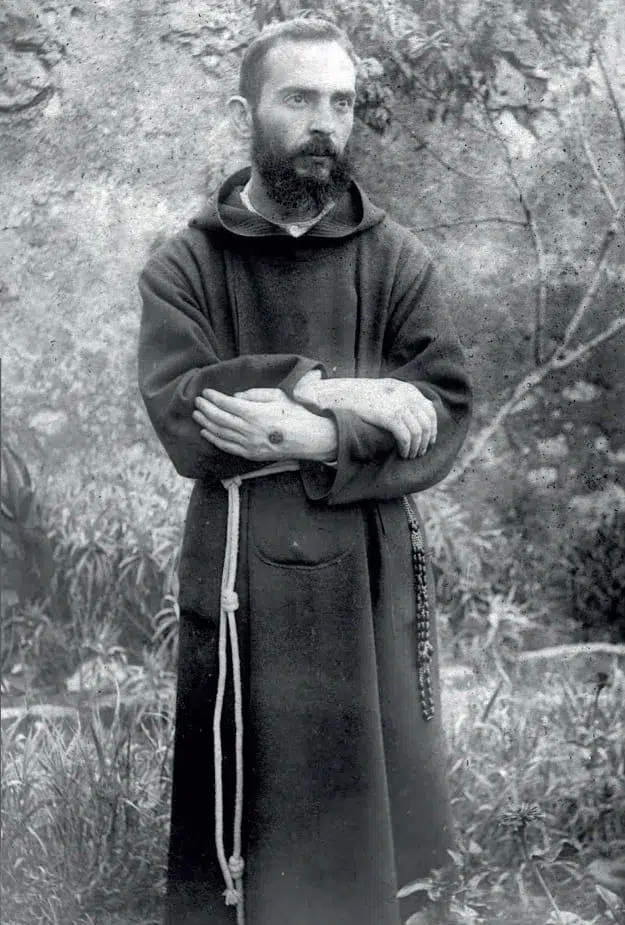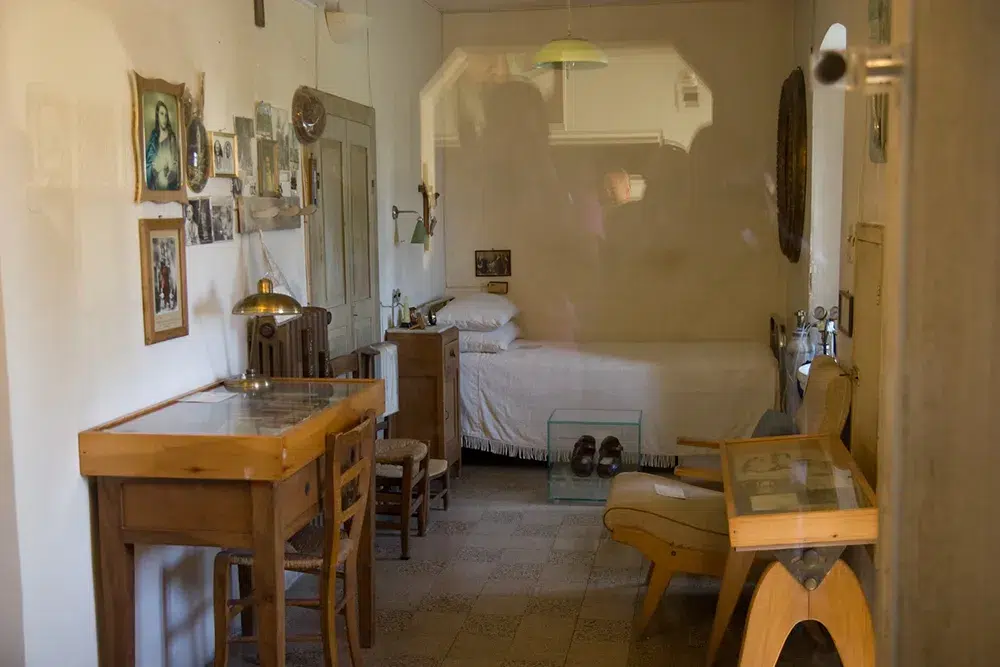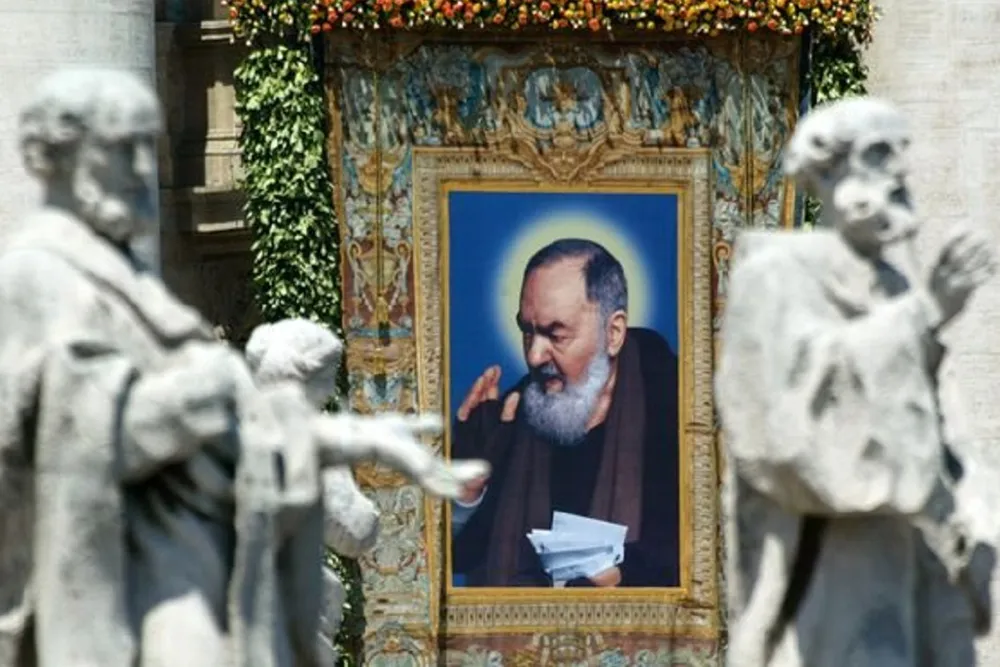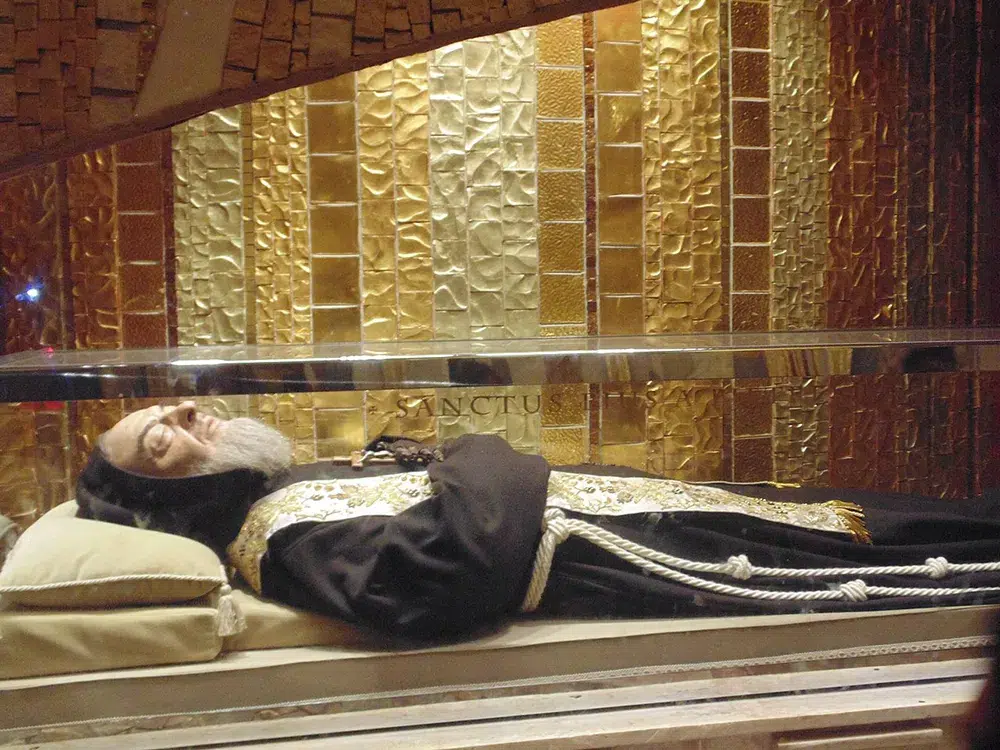The 20th century was marked by wars, persecutions and a profound spiritual crisis. In the midst of this scenario, God wanted to give the Church an exceptional witness to holiness: St. Pio of Pietrelcinabetter known as Padre Pio. This humble Capuchin friar became a beacon of prayer, sacrifice and total dedication to Christ, and even today his life continues to touch millions of faithful around the world.
Its simple message -"Pray, wait and don't worry."- encloses a spirituality of absolute trust in God. For priests and seminarians, his figure is a living model of what it means to be configured to Christ, the Good Shepherd, and to offer one's life in favor of souls.
The future saint was born as Francesco Forgione in Pietrelcina (Italy) in 1887, in the bosom of a humble and deeply believing peasant family. From childhood he stood out for his prayer life and spiritual sensitivity. His parents, Grazio and Maria Giuseppa, transmitted to him a simple and solid faith, which became the basis of his whole life.
At the age of ten, Francesco clearly expressed his desire to consecrate himself to God. He entered the Capuchin order, where he took the name of Pío in honor of St. Pius V. His training was marked by austerity and discipline, but above all by an ardent love for Christ the Eucharist and a deep devotion to the Virgin Mary.
This detail is key to understanding his later ministry: the priesthood was not for him an office or a task, but a total and radical dedication to Jesus Christ.

In 1910, at the age of 23, he was awarded the priestly ordination. From the beginning of his ministry he stood out for his pastoral zeal and intense interior life.
During most of his priestly life he resided in San Giovanni RotondoThe convent was a small Capuchin convent that would soon become a center of worldwide pilgrimage. There, Padre Pio dedicated himself to two great missions: celebrate Holy Mass with extraordinary fervor y spending hours in the confessionalreconciling the faithful with God.
His life demonstrates that the mission of a priest does not depend on grand scenarios or complicated programs, but on living faithfully the mystery of Christ in the Eucharist and in the forgiveness of sins. As St. Josemaría Escrivá reminds us in many of his texts, holiness is achieved in the ordinary, in fidelity to one's daily duties and in the love with which one serves God and others.
One of the most surprising phenomena of his life were the stigmasThe visible wounds of the Passion of Christ, which appeared on his body in 1918 while he was praying before a crucifix, remained with him for 50 years, until his death in 1968. These wounds on his hands, feet and side remained with him for 50 years, until his death in 1968.
Padre Pio accepted this suffering as a participation in the cross of Christ. He never boasted of these extraordinary gifts; on the contrary, he lived them with discretion and humility, enduring misunderstandings and even investigations by the ecclesiastical authorities.
The stigmata were a visible sign of what every priest is called to be: another Christ. The priestly ministry is not a career of prestige, but a dedication that passes through the cross. For seminarians today, contemplating the life of Padre Pio is an invitation not to fear sacrifice, but to embrace it with love.
In addition to the stigmata, Padre Pio was known for other spiritual gifts:
These charisms impressed the crowds, but he always insisted on the essential: God's grace is poured out mainly through those who have the grace of the Holy Spirit. sacraments.
His example reminds us that the most important aspect of the priestly ministry is not extraordinary phenomena, but daily fidelity: celebrating Mass with devotion, hearing confessions with patience, preaching with truth and pray with perseverance.

Padre Pio's love was not limited to the spiritual realm. In 1956 he inaugurated the Casa Sollievo della Sofferenza Hospitalan institution that to this day remains a medical reference in Italy.
This project was born out of her conviction that the sick should not only be treated with medical techniques, but also with compassion and spiritual care. The hospital was the fruit of his prayer, the collaboration of many benefactors and divine Providence.
In this way, Padre Pio showed that Christian charity does not remain in words, but is translated into concrete works that alleviate human suffering. A very current lesson for the Church: priests are called to be instruments of hope, not only in the confessional, but also in the peripheries of suffering.

On September 23, 1968, Padre Pio gave up his soul to God after a life of heroic dedication. He was 81 years old. His last words were: "Jesus, Mary".
His funeral was attended by more than 100,000 people, a testimony to the immense affection and devotion he had aroused during his lifetime. In 1999 he was beatified by St. John Paul IIand in 2002, the Pope himself canonized him, proposing him to the world as a model of sanctity..
Today, millions of pilgrims flock to San Giovanni Rotondo to pray at his tomb, and his devotion has spread to every continent.

Beyond the extraordinary phenomena, what is most appealing about Padre Pio is the depth of his spiritual life. His message can be summed up in three words: prayer, suffering and trust.
These three attitudes are fundamental for any Christian, but especially for those preparing for the priesthood. The priest is a man of prayer, who offers his life with Christ and trusts fully in Providence.
The CARF Foundation works so that thousands of seminarians and priests receive formation at ecclesiastical universities in Rome and Pamplona. Looking at the life of Padre Pio, one finds direct inspiration:
Future priests, sustained by the support of the Foundation's benefactorsare called to follow this path of holiness. Padre Pio's testimony reminds us that the priest does not belong to himself, but is all of Christ and all of the Church.
His example invites the faithful to rediscover the value of confession, the Eucharist, prayer and trust in God. For priests and seminarians, he is a mirror in which to contemplate what it means to live configured to Christ to the ultimate consequences.
Today, his voice resonates with the same strength as when he was alive: "Pray, wait and don't worry. Anxiety is of no use. God is merciful and will hear your prayer."
